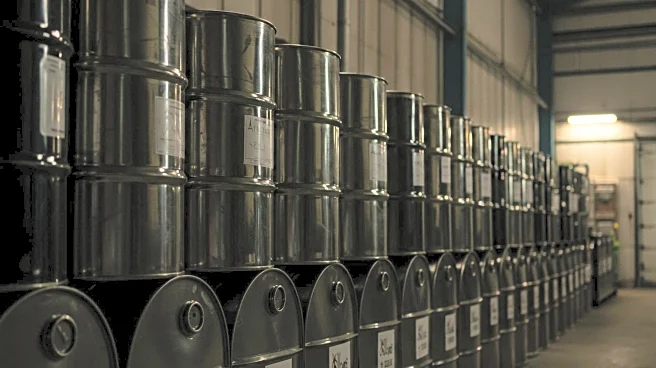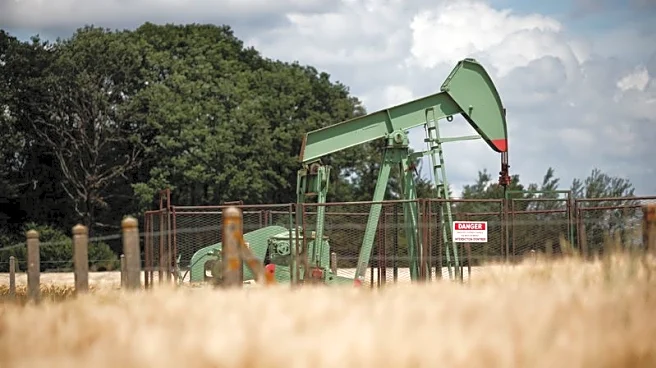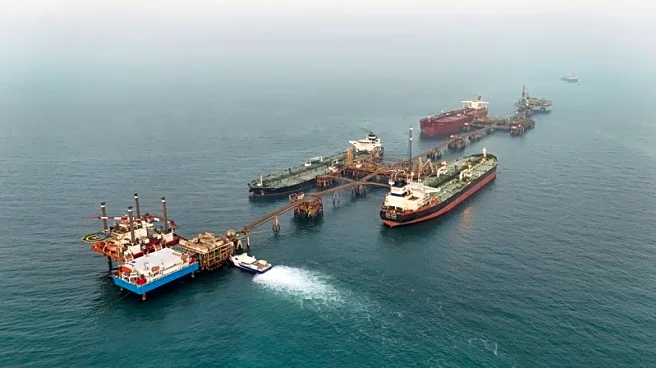What's Happening?
The International Energy Agency (IEA) has forecasted a record surplus in global oil markets for 2026, driven by slowing demand growth and increasing supply. According to the IEA's monthly report, oil inventories are expected to accumulate at a rate of 2.96 million barrels per day, surpassing the average buildup during the pandemic year of 2020. The OPEC+ coalition, led by Saudi Arabia, has accelerated the restart of halted production, while forecasts for output outside the group, particularly in the Americas, have been slightly increased. Crude oil prices have declined by approximately 12% this year, trading near $66 a barrel in London, as supply increases coincide with concerns over economic growth due to President Trump's trade policies. The price drop provides relief for consumers but poses financial challenges for oil-producing companies and countries.
Why It's Important?
The anticipated surplus in oil markets could have significant implications for global economies and the energy sector. Lower crude prices may benefit consumers by reducing fuel costs, aligning with President Trump's push for lower energy prices. However, the surplus poses risks to oil-producing nations and companies, potentially impacting their revenues and economic stability. The situation highlights the delicate balance between supply and demand in the oil market, with geopolitical factors such as sanctions on Russia or Iran potentially altering the dynamics. The forecasted surplus underscores the need for strategic adjustments by oil producers to manage the oversupply and stabilize prices.
What's Next?
As the oil market approaches a surplus, stakeholders may need to consider production adjustments to prevent further price declines. OPEC+ and other major producers might explore coordinated efforts to manage supply levels. Additionally, geopolitical developments, such as sanctions or trade policies, could influence market conditions. The IEA's report suggests that while summer demand for driving fuels offers temporary support, the market is already tipping into oversupply. Monitoring these factors will be crucial for industry players and policymakers to navigate the evolving landscape.
Beyond the Headlines
The projected oil surplus raises questions about the long-term sustainability of current production levels and the environmental impact of increased fossil fuel use. As the world transitions towards cleaner energy sources, the oil industry faces pressure to adapt to changing consumer preferences and regulatory environments. The surplus may accelerate discussions on energy diversification and investment in renewable technologies, highlighting the need for a balanced approach to energy production and consumption.













